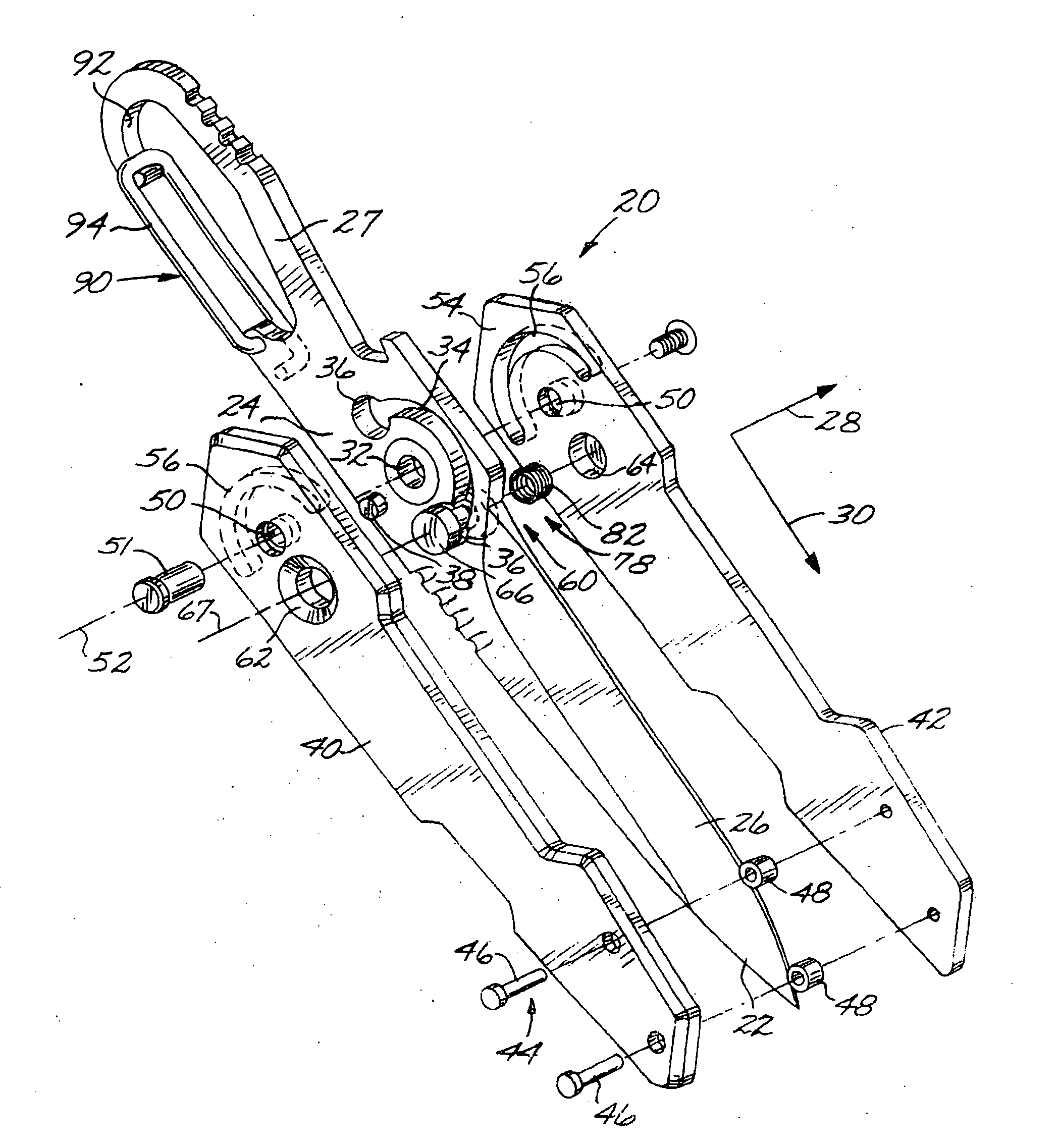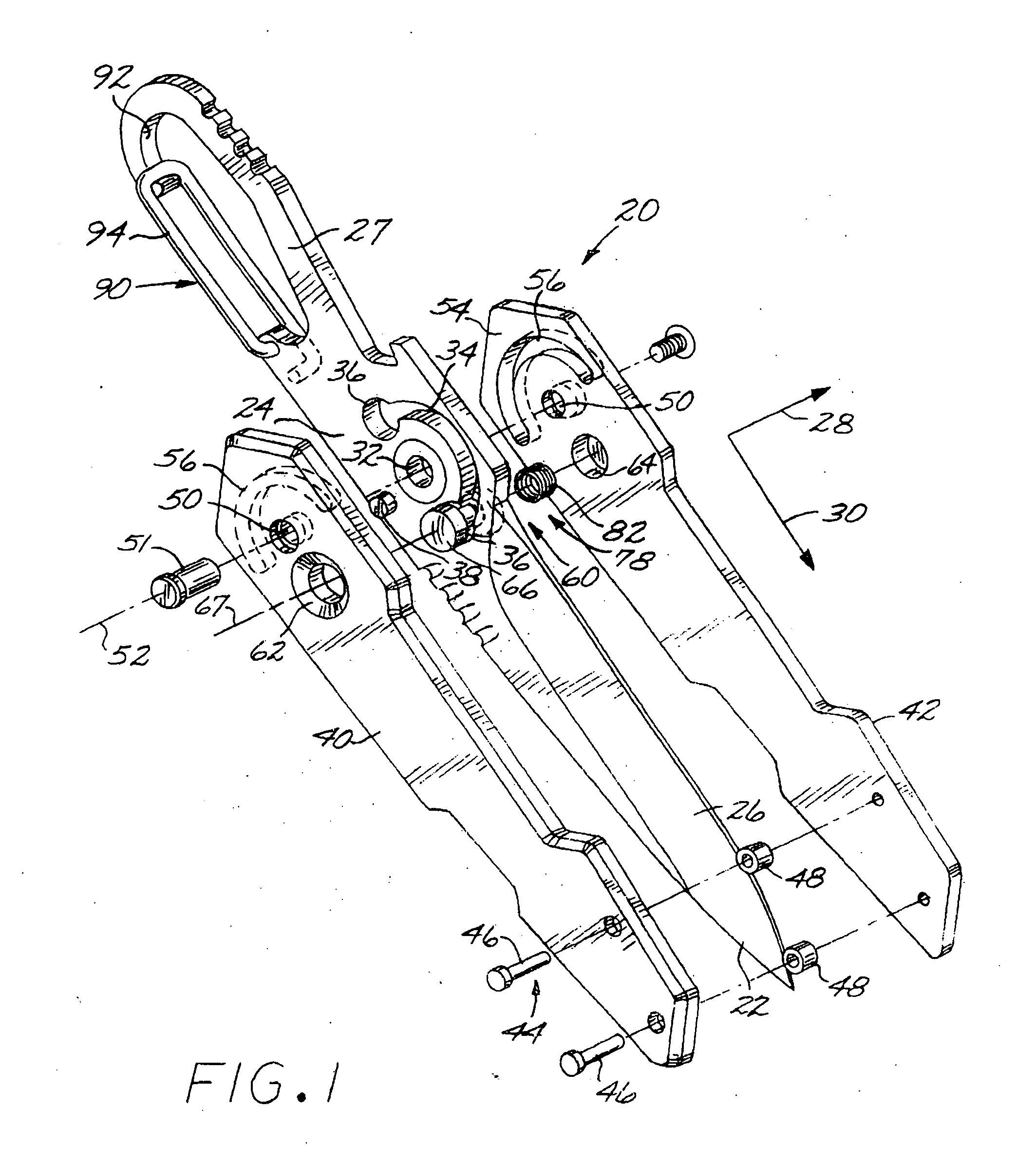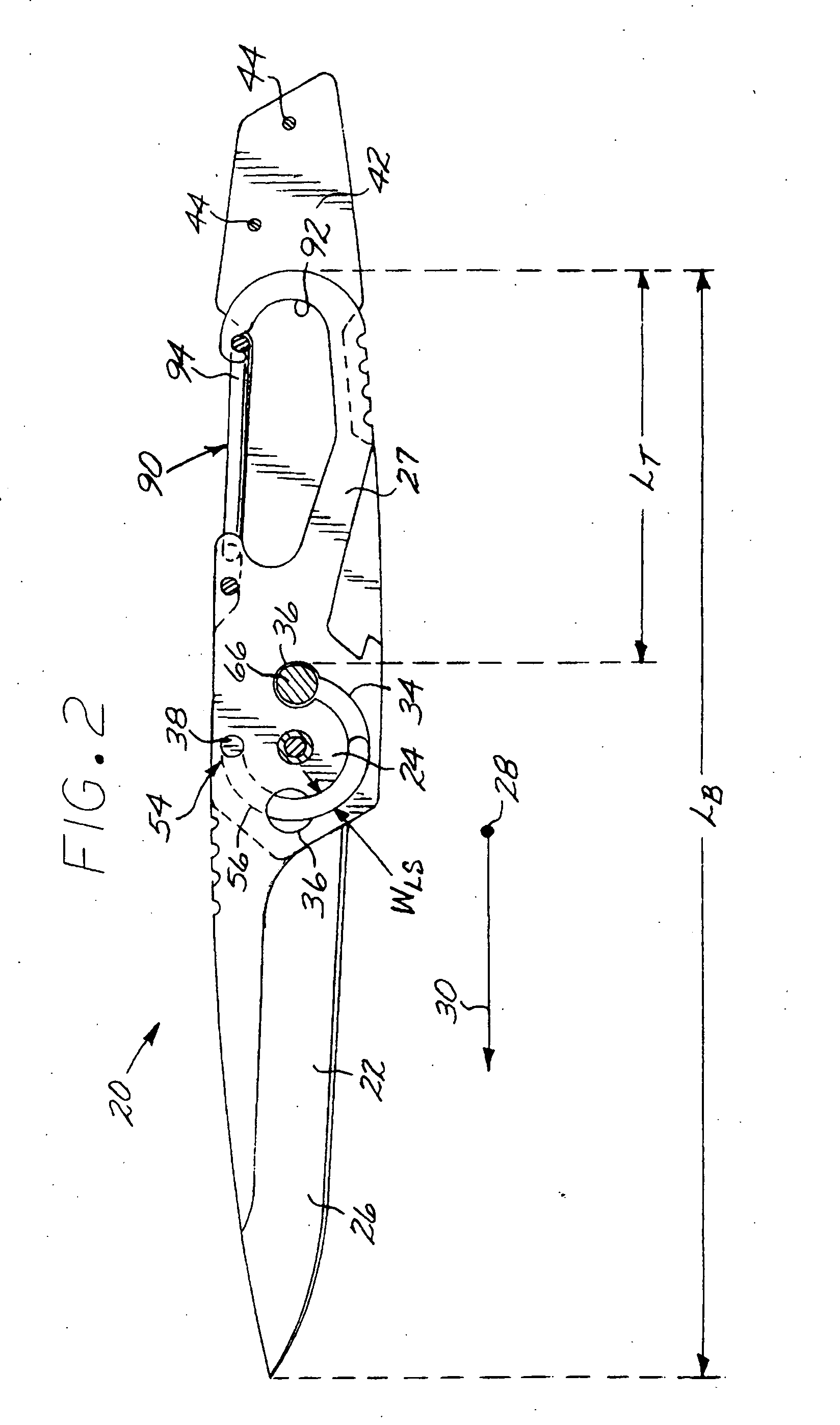Fixed-blade knife with pivotable side pieces
a fixed-blade knife and side piece technology, which is applied in the field of fixed-blade knives with pivotable side pieces, can solve the problems of not being able to store knives, not being able to damage leather and other flexible sheath materials, and not being able to increase etc., to achieve convenient use, not increasing the size and profile of fixed-blade knives, and being easy to loca
- Summary
- Abstract
- Description
- Claims
- Application Information
AI Technical Summary
Benefits of technology
Problems solved by technology
Method used
Image
Examples
Embodiment Construction
[0021]FIGS. 1-2 depict a fixed-blade knife 20 that includes a unitary blade 22 having a pivot region 24, an implement 26 extending in one direction from the pivot region 24, and a tang 27 extending in the opposite direction from the pivot region 24. That is, the pivot region 24 lies between the implement 26 and the tang 27. As used herein, a “blade” is any article that is generally thin in a first dimension 28 and longer in a second dimension 30 (also termed the “direction of elongation” of the unitary blade 22) that is perpendicular to the first dimension 28. The thin dimension 28 lies perpendicular to a “blade plane”, which is the plane of the illustration in FIG. 2, and the direction of elongation 30 lines in the blade plane. As used herein, “unitary blade” refers to a blade made of a single piece of material. In this case, the entire unitary blade, including the implement 26, the pivot region 24, and the tang 27 are all made of the same piece of material, typically a metal such ...
PUM
 Login to View More
Login to View More Abstract
Description
Claims
Application Information
 Login to View More
Login to View More - R&D
- Intellectual Property
- Life Sciences
- Materials
- Tech Scout
- Unparalleled Data Quality
- Higher Quality Content
- 60% Fewer Hallucinations
Browse by: Latest US Patents, China's latest patents, Technical Efficacy Thesaurus, Application Domain, Technology Topic, Popular Technical Reports.
© 2025 PatSnap. All rights reserved.Legal|Privacy policy|Modern Slavery Act Transparency Statement|Sitemap|About US| Contact US: help@patsnap.com



